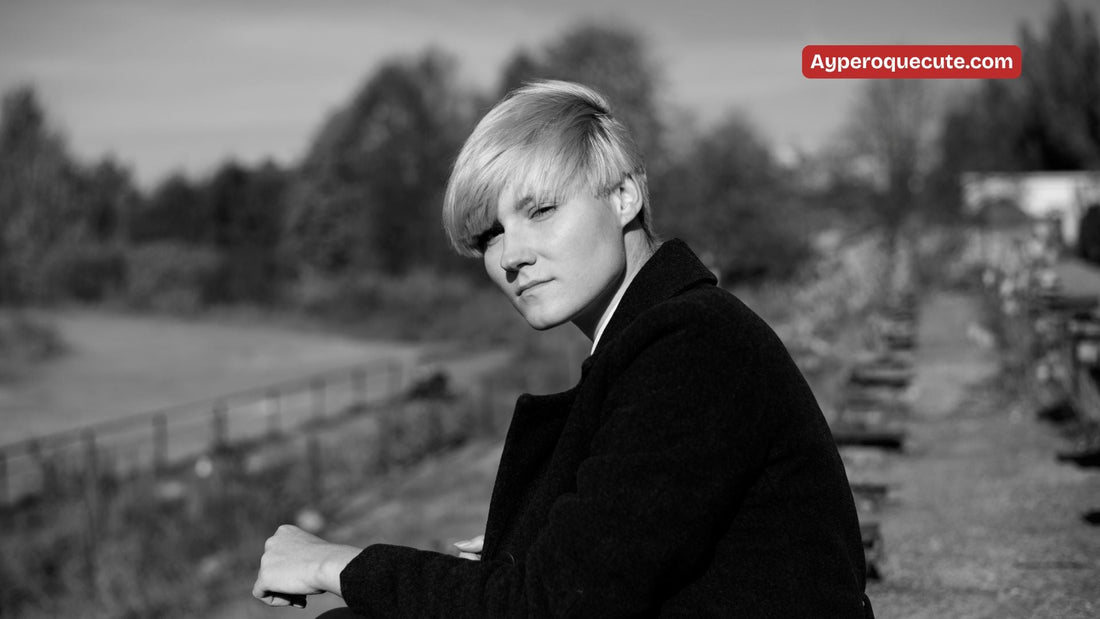
What Is Androgynous Fashion? A Complete Guide
Share
Androgynous fashion is a style that blends masculine and feminine elements to create looks that aren’t tied to traditional gender expectations. This approach to dressing is not about erasing identity, it’s about expanding it. People are no longer limiting their wardrobe choices to what society tells them men or women “should” wear. Instead, they’re exploring gender-free clothing that feels more authentic, personal, and expressive.
The rising interest in androgynous fashion today is driven by a growing awareness of individuality and inclusion. More people are asking questions like, “Why should fashion be labeled by gender in the first place?” Whether it’s through minimalist outfits, oversized tailoring, or a mix of styles, androgynous fashion gives people the freedom to dress how they feel, not just how they look.
This movement matters because it empowers choice. It offers an alternative to rigid fashion rules and opens space for personal style to reflect confidence, creativity, and comfort.
Read also: Latin Culture & Our Love for Perritos: A Match Made in Heaven
What Is Androgynous Fashion?
Androgynous fashion is a clothing style that intentionally mixes traditionally masculine and feminine elements. It breaks away from the idea that some clothes are only for men and others only for women. Instead, it focuses on balance, pairing structured pieces with softer silhouettes, blending sharp tailoring with fluid fabrics, and choosing outfits based on self-expression rather than gender roles.
This style is often misunderstood or lumped together with other fashion terms. Here's how it’s different:
-
Androgynous fashion: A style that blends masculine and feminine clothing elements. It's about aesthetic and styling choices that blur gender lines.
-
Gender-neutral clothing: Garments made to fit all genders. Usually designed with simplicity and comfort in mind, these pieces are functional and often unisex in design.
-
Non-binary fashion: A personal style expression adopted by people who don’t identify exclusively as male or female. It can include androgynous pieces but also varies widely depending on individual identity.
Androgynous fashion is about styling, not labeling. It's not tied to a gender identity—it’s an approach to fashion that lets people feel like themselves.
A Quick History of Androgynous Style
Androgynous fashion may feel like a modern trend, but its roots stretch back over a century. Throughout the decades, cultural icons, artists, and designers have pushed back against the idea that clothing should follow strict gender rules. Here are some of the key moments that helped shape what we now recognize as androgynous style.
-
1920s: Coco Chanel introduces trousers for women
Coco Chanel was one of the first designers to challenge the fashion norms of her time. In an era when women were expected to wear dresses and skirts, she introduced tailored pants into women’s wardrobes. Her designs allowed women to move freely and comfortably, breaking away from restrictive, gendered clothing and creating space for a new kind of feminine strength. -
1930s: Marlene Dietrich wears tuxedos on red carpets
Hollywood actress Marlene Dietrich became famous not only for her acting, but also for her bold fashion choices. She regularly wore tuxedos and suits to public events, including movie premieres. Her polished, masculine-inspired outfits redefined glamour and made it clear that elegance didn’t need to come from a gown. Dietrich’s style sent a powerful message: fashion can be confident, sexy, and sophisticated—regardless of gender labels. -
1960s–70s: David Bowie and Mick Jagger bring glam rock and fluid style into pop culture
As music culture exploded in the '60s and '70s, artists like David Bowie and Mick Jagger blurred the lines between masculine and feminine fashion on stage. Bowie’s alter ego, Ziggy Stardust, combined dramatic makeup, jumpsuits, and fluid silhouettes that defied traditional gender norms. Mick Jagger famously wore a man’s dress during a live performance in 1969, embracing style as performance and self-expression. This era marked androgyny’s bold entrance into the mainstream. -
1980s: Annie Lennox and Grace Jones led the era of power suits and strong silhouettes
In the 1980s, androgynous fashion became more structured and striking. Singer Annie Lennox adopted a short haircut and tailored suits, creating a signature look that blended edge and elegance. Grace Jones took this further, combining sculptural fashion, fierce poses, and gender-defying presence on stage and in editorials. Both artists used their style to question traditional gender roles and helped normalize strong, nonconforming aesthetics in fashion. -
2000s–Today: Jaden Smith, Zendaya, Kristen Stewart normalize androgynous looks in film, fashion campaigns, and everyday wear
In recent years, a new generation of celebrities has carried the androgynous style forward. Jaden Smith made headlines when he wore skirts in Louis Vuitton’s womenswear campaign. Zendaya consistently chooses sleek, unisex looks on red carpets, and Kristen Stewart mixes suits, sneakers, and sharp tailoring in ways that blur the lines between masculine and feminine. These modern icons show that androgynous fashion isn’t just a trend, it’s a lasting shift toward freedom and authenticity in how we dress.
Why It Matters: Cultural and Personal Impact
Fashion is more than what we wear—it reflects how we see ourselves and how we want others to see us. Androgynous clothing plays a big role in challenging the old idea that clothes must be separated by gender. It gives people the freedom to step outside those limits and create a style that feels true to who they are.
Wearing clothes that don’t fit into “men’s” or “women’s” categories can be empowering. It helps people feel more confident and comfortable, especially when their gender identity doesn’t follow traditional norms. For many in the LGBTQ+ community, androgynous fashion is a form of self-expression that feels honest and freeing.
But this style isn’t just for one group. Anyone can wear androgynous clothing. It’s about feeling good in your skin, choosing what works for you, and letting go of the rules that say what you should wear based on your gender.
Key Elements of Androgynous Fashion
Androgynous fashion isn’t one specific look, it’s a mix of styles that work together in balanced and expressive ways. Here are some of the main pieces and features you’ll often find in this style:
-
Neutral color palettes: Shades like black, white, gray, tan, and beige are easy to pair and don’t lean masculine or feminine.
-
Balanced silhouettes: Outfits often combine fitted and oversized items, like a slim top with wide-leg pants or a loose shirt over skinny jeans.
-
Functional accessories: Crossbody bags, loafers, minimalist belts, and backpacks keep things clean and practical.
-
Classic garments: Button-up shirts, structured trousers, tailored blazers, and simple boots are staples that never go out of style.
-
Minimalist details: Most pieces avoid lace, glitter, or heavy prints. Clean cuts, solid colors, and subtle textures are preferred.
These pieces are easy to mix and match. They work for many occasions, from casual to professional and don’t force you into one type of presentation. That’s what makes androgynous outfit ideas so versatile: you can build a genderless wardrobe that suits your lifestyle, your body, and your personality.
How to Dress Androgynously: A Beginner’s Guide
If you’re new to this style, here’s how to start building an androgynous look step by step:
-
Start with what you own
Look through your closet. You probably already have some basics like plain t-shirts, sneakers, denim jackets, or neutral sweaters. These are great starting points. -
Balance proportions
Try mixing wide-leg pants with a fitted shirt or wearing an oversized top with slimmer jeans. This helps create a look that isn’t tied to one gender. -
Choose muted tones first
Colors like gray, navy, black, or beige are easy to pair and help build outfits that aren’t too loud or gender-coded. -
Play with layering
Add button-down shirts, vests, or loose jackets to bring structure and personality to your outfits. Layers make a look more dynamic and stylish. -
Focus on comfort and authenticity
Androgynous fashion should feel natural to wear. Choose pieces that make you feel like yourself, not like you’re trying to fit into a trend.
You don’t need to change your entire wardrobe at once. Start small, try new combinations, and see what works for you. There are no strict rules, just a chance to express yourself with freedom.
Common Misconceptions About Androgynous Fashion
-
It’s not just for queer or non-binary people
Anyone can enjoy androgynous fashion. It’s about personal style, not your identity. -
You don’t need to wear only black or oversized clothes
Androgynous outfits can include color, fitted pieces, and accessories. The goal is balance, not uniformity. -
It’s not about hiding identity, it’s about expressing it freely
This style helps people show who they are, not cover it up. -
Anyone can adopt this style regardless of body type or gender identity
Androgynous fashion is inclusive. It fits all shapes, sizes, and walks of life.
Androgynous Brands & Designers to Know
Many designers and fashion brands today are embracing androgynous style, offering clothing that moves beyond gender categories. High fashion labels like Gucci and JW Anderson have led the way with runway collections that feature gender-blending silhouettes and bold, inclusive designs. These brands use fashion to make a statement about identity, freedom, and creativity.
Smaller, independent labels are also pushing boundaries. Telfar, known for its unisex bags and inclusive message, describes itself as “not for you—for everyone.” Another standout is One DNA, a gender-inclusive fashion line based in New York that creates modern basics designed for all bodies. Brands like Wildfang and Origami Customs are also rethinking what genderless fashion can look like, combining comfort, fit, and social purpose.
These designers reflect a larger shift: clothes should reflect who you are, not who you’re told to be.
Final Thoughts: Fashion Has No Gender
Androgynous fashion is more than a style, it’s a way to be yourself without limits. It allows people to mix and match pieces that feel right, without worrying about whether they’re labeled “men’s” or “women’s.” This isn’t about fitting into a box, it’s about expanding who you can be.
Fashion is one of the simplest ways to express who you are. When you choose clothes that feel true to you, you’re claiming your space with confidence and clarity.
